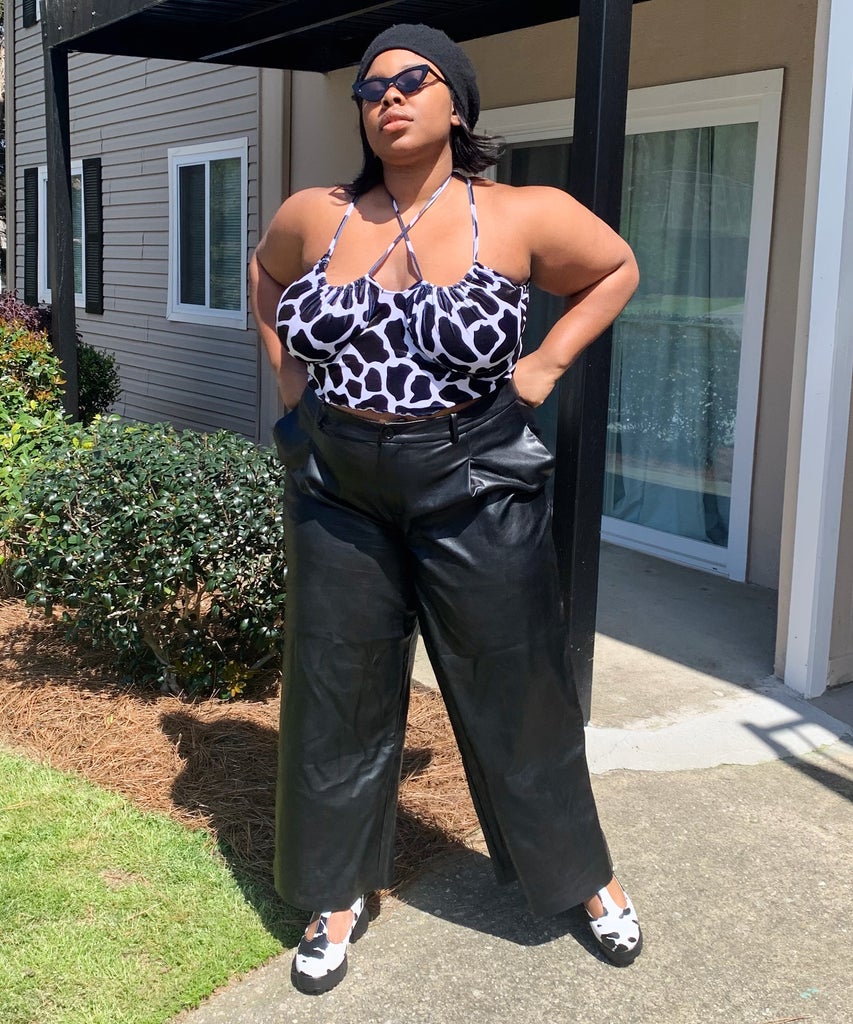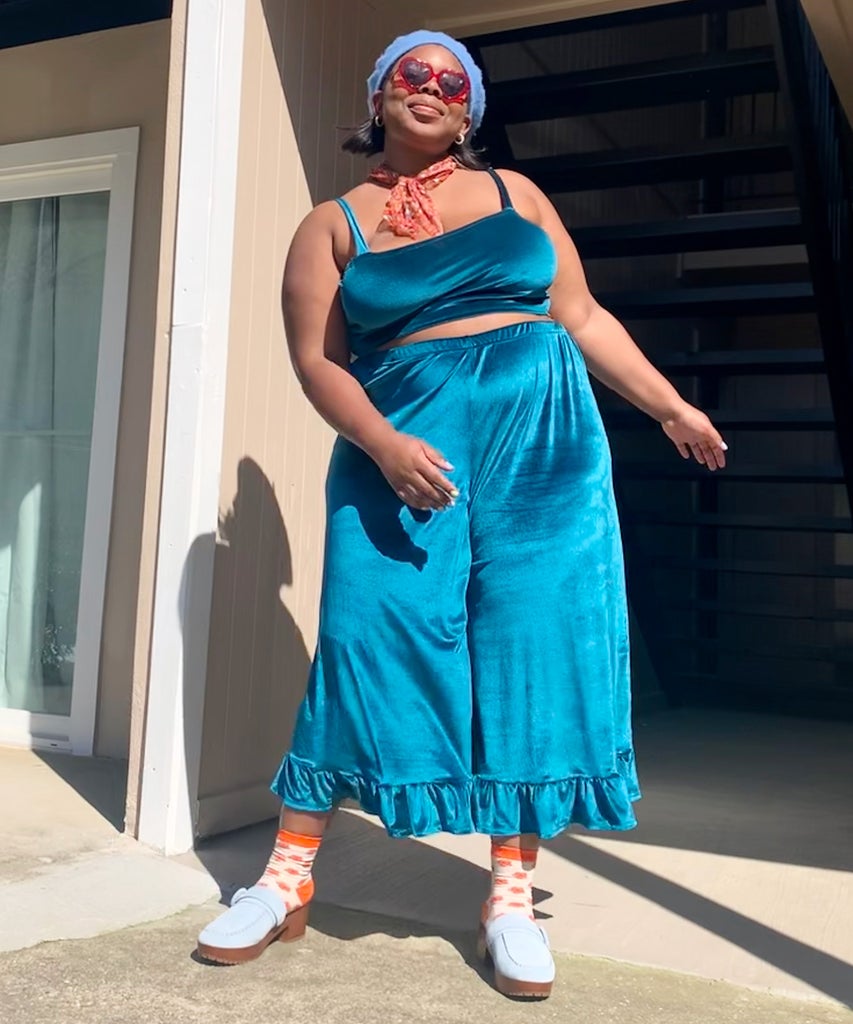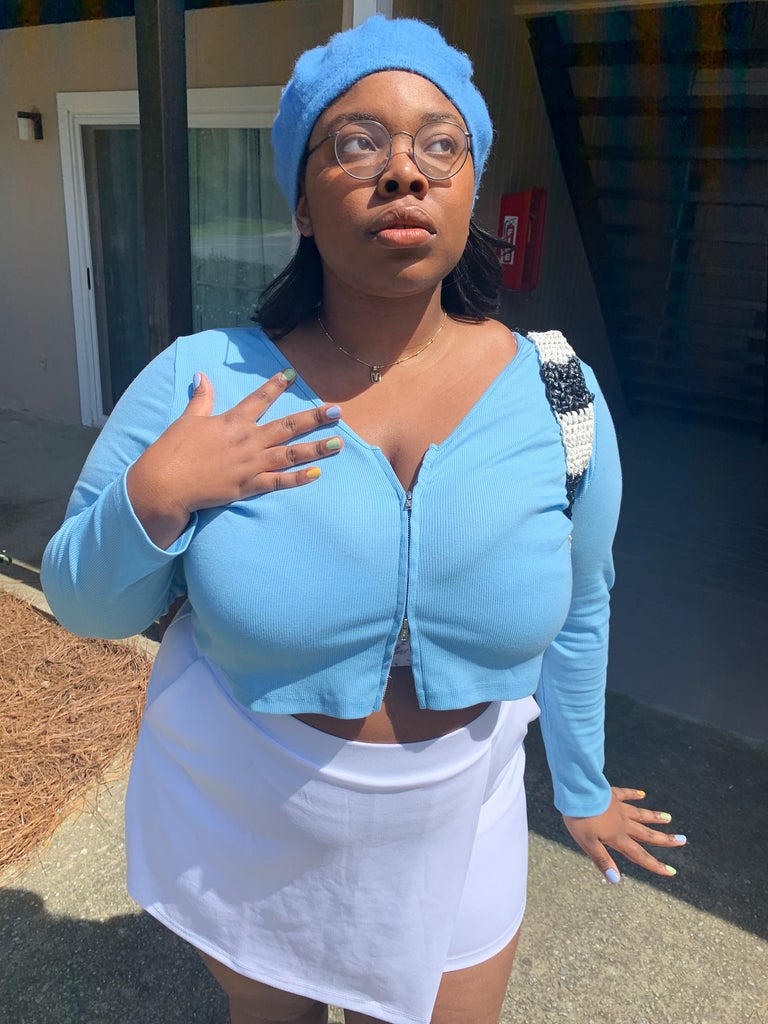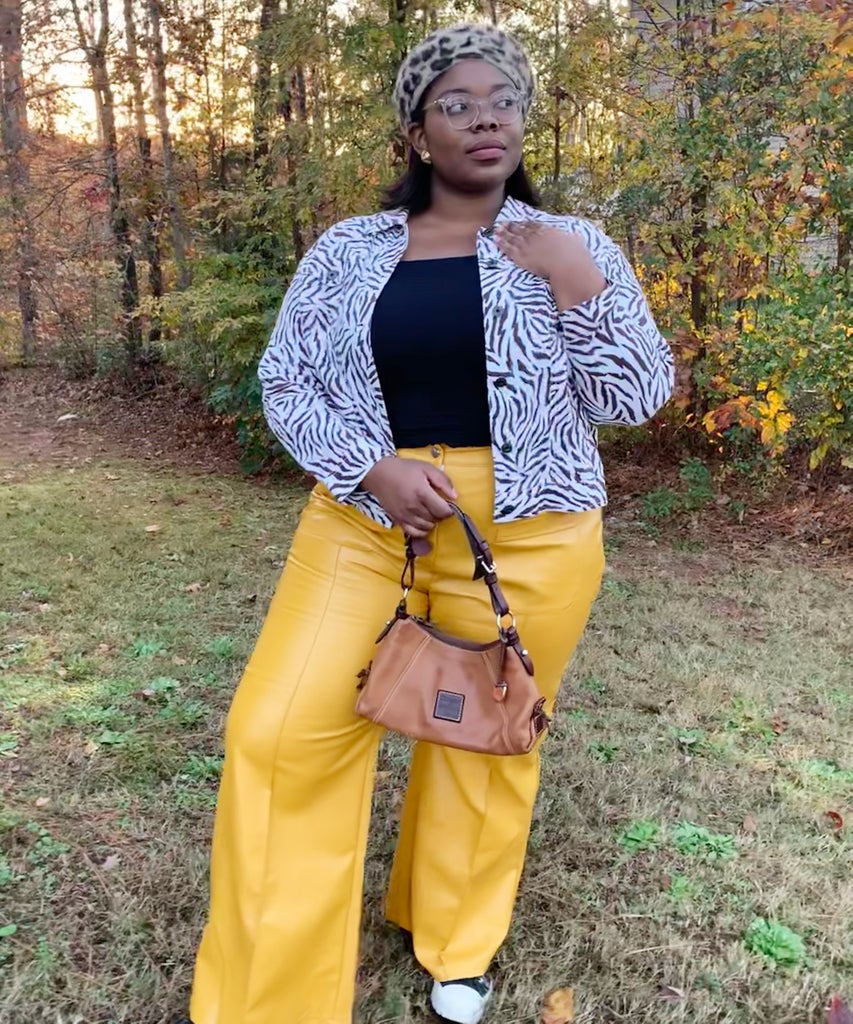

Welcome to Fashionably Black!, a style and culture guide for Black people highlighting the cultural moments, pioneers, and conversations we’ve always been a part of! Putting a magnifying glass to style & self expression, Fashionably Black! explores the many ways we are the history, we are the fashion, and will ALWAYS be. We’re not trending, we’re true.
Another fashion month has come and gone. In the weeks following, the runway-obsessed fashion girlies reveled in the latest collections, breaking down “what it all means” for the fashion-loving public and inundating Instagram and TikTok with their well-thought-out looks (as they should). Don’t get me wrong: I understand the hype, and I’d be lying if I said I’d skip out on attending a show if I was invited or if I said I don’t love getting the free clothes. However, years of feeling deeply tied to the fashion industry — from a lifetime of being a voracious consumer of fashion media to working at the corporate offices of a luxury Italian retailer and a few style-focused women’s media companies — and yearning to be seen and accepted within it have been less than fruitful. Fashion has never loved me, a plus-size Black woman, back.

When I speak of the fashion industry, I’m referring to the glossy magazines, the retail stores, the thought leaders, and the luxury high-end brands whose creations have graced many runways. I’m also referring to the machine that runs all of these enterprises and ultimately informs their target audience: white people. Whether it’s creating clothes exclusive of curvy Black bodies like denim gaping at the waistline or prejudiced fashion rules like “horizontal lines don’t look good on bigger people”, exclusionary rhetoric has shamed or completely left out large Black women from the conversation. I’ve had to divest my time and energy from the industry, and reevaluate the level of importance it’s played in my life.
The more I’d bop from store to store and mall after mall, the more quickly I realized how little effort was put into clothing bigger bodies. This is when the frustration and the doubt in fashion started to grow. I thought, ‘Were people like me not worthy of enjoying fashion too?’
Chichi offor, Associate Writer, r29

I haven’t always felt this way about fashion. Like many personal style-lovers, my relationship with the industry was greatly influenced early in life by the media I consumed. I scanned the pages of teenybopper magazines that had the likes of Taylor Swift and Selena Gomez plastered on covers and had me convinced Raven Simone — whose body resembled my own — was “too big.” I glued my eyes to the television screens that praised flat-stomached, teen golden girls like Hilary Duff. I used these channels as gateways to self-expression by mixing and matching clothing trends and styles while simultaneously feeding my desire to be a part of it all. Experimentation with personal style and crafting fun outfits had become a pinnacle of my identity. Little did I know, the seeds of self-doubt and self-consciousness also grew along with my increasing fascination. This along with nudges of concern for my weight from loved ones triggered my need to appear differently than my more rounded frame — thus began years of falling victim to diet culture, disordered eating, and body insecurities.
My interest in fashion grew as I tacked on a fashion merchandising minor at the University of Georgia and would spend growing amounts of time on Vogue Runway. I’d read the literature and gain knowledge about fashion history. Simultaneously, I’d get inspiration from the things I’ve learned from blogs and the trends I observed. As I got older, my hips and thighs held on to more flesh, and it became increasingly difficult to clothe myself. Naturally, I was pretty into shopping, but the more I’d bop from store to store and mall after mall, the more quickly I realized how little effort was put into clothing bigger bodies. This is when the frustration and the doubt in fashion started to grow. I thought, “Were people like me not worthy of enjoying fashion too?”

There’s something incredibly disheartening about never fully being able to express yourself through dress. With 68% of American women donning garments that are a size 16 or higher, it started to seem quite bizarre that I was relegated to the dark, unkempt corners of the Forever21, H&M, and Target for mostly all of my wardrobe needs through high school, college, and early adulthood. I’d learn about innovative brands conserving resources and using the coolest eco-fabrics, while I couldn’t even buy a decent pair of jeans until I was 25. The designers I spent my time studying barely had Black people in their runway shows let alone anyone above a size 2.
Somewhere along the way, Instagram started booming. That’s when I began my journey of body acceptance which was greatly impacted by following Black and plus-size models with bodies similar to mine I started seeing on my feed. While also providing a level of empowerment, Instagram was also a place that served as a reminder of the exclusion of plus-size bodies in the fashion space. The absence of brown-skinned thicker bodies continued with most retail stores and brands on the platform championing such exclusions in their marketing.
Unrequited affection is painful, and I simply won’t spend any more excess energy, time, and mind space on trying to fit into the picture-perfect fashion industry girl.
Chichi offor, Associate Writer, r29

When were things finally going to change? I thought it could maybe be once I was working in the industry. Once I used my large frame and Black body to take up space and show that I belonged there just as much as anyone else. I’d survive the internship at a luxury fashion company where the loud fatphobia and racial microaggressions ran rampant. I’d hear whispers of a size 4 Black model being “too big” for their clothing from superiors while standing right in front of me to curvier employees self-criticizing their own bodies to fit in. For three years I’d apply to hundreds of media industry positions, to get turned down and finally have to reckon with the fact that my qualifications only went so far if I looked the way I did. Then to finally cover fashion as a full-time staff member of a large media company while mainly getting pitched designers with collections that barely ever went above a size L.
I have seen some changes in the industry, and a bit of growth that hints towards a potential for a shift. It’s becoming a lot more common to see larger hips and belly fat on my Instagram Feed and Tiktok FYP. Independent brands like Zellie For She are starting smaller operations that cater to bigger Black bodies from the outset. However, the reality is only 8% of clothing stores cater to plus-sizes. Although the appearances of plus-size models this fashion month quadrupled compared to last season (from 19 to 81), that’s still only 1.81% of 4,471 models that were casted in NY, London, Milan, and Paris. To top that off many brands that use larger models in their advertising on their runway don’t even actually carry plus-sizes. With the landscape seeming so abysmal, at what point does one cut their losses? I don’t hate it, but I’ve had to recognize what’s in front of me. Unrequited affection is painful, and I simply won’t spend any more excess energy, time, and mind space on trying to fit into the picture-perfect fashion industry girl.
A few years ago, it started with unfollowing every brand that didn’t carry sizes I could wear. Then it progressed to include unfollowing most white straight-sized style influencers, brands that don’t have POC (especially Black folk) in their marketing imagery, and brands that refuse to use larger bodied models. I don’t follow trends as closely, and I don’t care much for spending time analyzing runway collections and fawning over once head-turning designs from brands that exclude Black people AND fat bodies. Even if it seems small. These changes served as intentional mental cleanse that has added clarity to my day-to-day life. While there will be times that the negative noise breaks through, I know at the very least that I’m worthy of being seen.
Like what you see? How about some more R29 goodness, right here?
Eradicating Fatphobia, Embracing Radical Body Love




